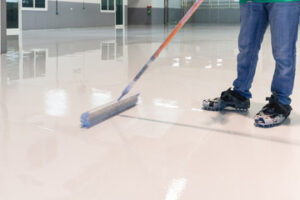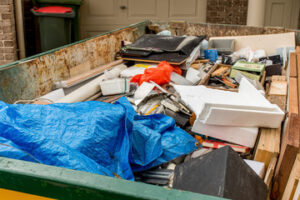Roofing Company Baton Rouge provides insulation that will help keep homes cooler in the summer and warmer in the winter. They also repair roofs and install gutter systems. They can handle sloped and flat residential and commercial roofing systems.

A good roofing contractor will have a strong and positive reputation in the community. They will also have a full workmanship warranty for their services.
A roofing company is an excellent choice when it comes to roof installation, repairs and maintenance. They can provide quality work at a competitive price, and they will also help you save money in the long run by reducing future repair costs. Moreover, a well-maintained roof can increase the value of your home and make it more attractive to potential buyers.
Whether you’re a homeowner who’s considering hiring a roofing contractor or a small business owner that wants to start a roofing company, it’s important to understand the total costs involved before you invest any money. You’ll need to determine the cost of materials and labor, as well as administrative and marketing expenses. A small business accountant is a great resource for this step, and you should involve them in the process from the beginning.
Once you have a clear understanding of the total costs, you’ll be able to add a mark-up for profit. However, it’s crucial to compare your pricing with local competitors before you settle on a final figure. You should also decide if you want to incorporate as a sole proprietorship, partnership, corporation or limited liability company (LLC). Consult with a lawyer in your area to determine which entity is best for your needs and to get the proper licensing and authorization to operate your roofing business.
You should also consider purchasing insurance to protect your company from liability. Roofing is a rugged industry where accidents and injuries can occur. Liability insurance will cover damage to property, injury to people and lawsuits. Insurance companies can help you select the right policy for your roofing business.
To attract customers, you should create a professional website and social media presence. A website makes it easy for customers to contact you, and social media gives your roofing business the opportunity to interact with prospective clients on a platform they use regularly. You can even purchase ads on social media to reach a targeted audience.
A strong brand name can make or break your roofing business. A memorable, easy-to-remember name can help you stand out from the competition and grab the attention of potential clients. You should also include a description of your services, and highlight any special offers or deals that you offer.
Safety
A roofing company should offer a number of safety measures to protect its workers. This includes providing safety equipment, conducting regular training and maintaining a safe work environment. These measures can help minimize the risk of accidents and injuries, which in turn reduces expenses for the company. They can also help ensure that the project is completed on time and in accordance with regulatory requirements.
The most common accidents on a roof are falls. These can be prevented with proper fall protection measures, such as safety harnesses, lifelines, and guardrails. Ladder safety is also important, and a roofing company should provide training on ladder selection, setup, and usage. They should also verify that their employees have the necessary certifications and experience to perform roofing work.
Workers should wear appropriate clothing for roofing, including long pants and a hat with a visor. They should also use footwear with non-slip treads and rubber soles, as well as a harness that fits around the torso and shoulders. Harnesses should be brightly colored so they can be easily spotted on the roof. It’s also a good idea to have an employee on the ground to monitor workers and ensure that they are following safety procedures.
Keeping a job site clean and organized is essential to prevent injuries. This can be done by flagging the area with warning lines and high visibility signage, securing all roofing materials in a safe place, and ensuring that vehicles are properly secured. In addition, a roofing company should establish clear communication channels and encourage workers to report any potential safety issues. Incentives for reporting can help boost worker morale and create a culture of safety in the workplace.
It’s also important for a roofing company to have liability insurance to protect its workers in case of an accident. The insurance policy should cover general liability and workers’ compensation, and it should be tailored specifically for the roofing industry. Prime Insurance offers comprehensive liability insurance that can help a roofing company mitigate the risks of accidents on the job. Contact us today to learn more about our coverage options and how they can benefit your business.
Reputation
A roofing company’s reputation is an important part of its business. People tend to trust companies with a good reputation. A reputable company will take steps to protect its reputation by providing quality services and responding to customer feedback. It is also important to keep up to date on industry news and trends.
A roofing company can improve its reputation by encouraging customers to write reviews and sharing them on social media. They can also highlight their decades of experience in the region to build trust with potential clients. This will help to differentiate them from storm chasers who are not local and may be unable to honor warranties or provide proper repairs. They will also have strong ties with manufacturers that can offer substantial warranties.
Insurance
Roofing is a rugged business where accidents and injuries are not uncommon. The right insurance coverage can help your company avoid financial ruin from property damage, third-party bodily injury and lawsuits. Among the most important insurance policies for roofing contractors are commercial general liability, workers’ compensation, vehicle and equipment insurance and an umbrella policy.
General liability insurance protects your business in the event that a third-party is injured by a tool, fall from a ladder or any other work-related issue. This type of coverage can pay for medical expenses, legal fees and repairs and restorations related to the incident. Likewise, it can cover any damages you are held responsible for as the result of slander, libel and other reputational issues.
Workers’ compensation, which is also known as workers’ comp, is a necessary form of insurance for any company with employees. This type of insurance will pay for your employees’ medical bills and lost wages if they are injured while working on the job. It can also provide for additional income to help them cover living costs while they recover from the injury.
Tools and equipment insurance, sometimes referred to as tool floater insurance, covers the costs of replacing tools and equipment that are stolen or damaged. Often, your auto insurance will not cover these items, so it is a good idea to get this policy separately.
Any roofing contractor who regularly transports high-value tools and equipment to different locations should consider getting inland marine insurance. This type of policy can protect your tools and equipment from theft, vandalism, fire, natural disasters or other unforeseen incidents while they are being transported.
A surety bond is another important insurance policy for any roofing company. A surety bond can compensate a client if you fail to complete a project. This type of insurance is mandatory in some states, and it can be a great way to build trust with clients. You can obtain a surety bond from an insurance company that specializes in this area. There are several different types of surety bonds, so make sure you choose the right one for your business needs.








